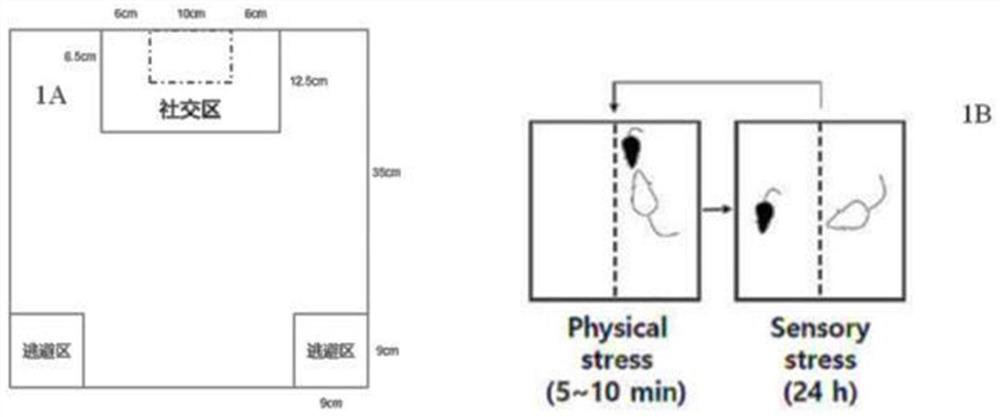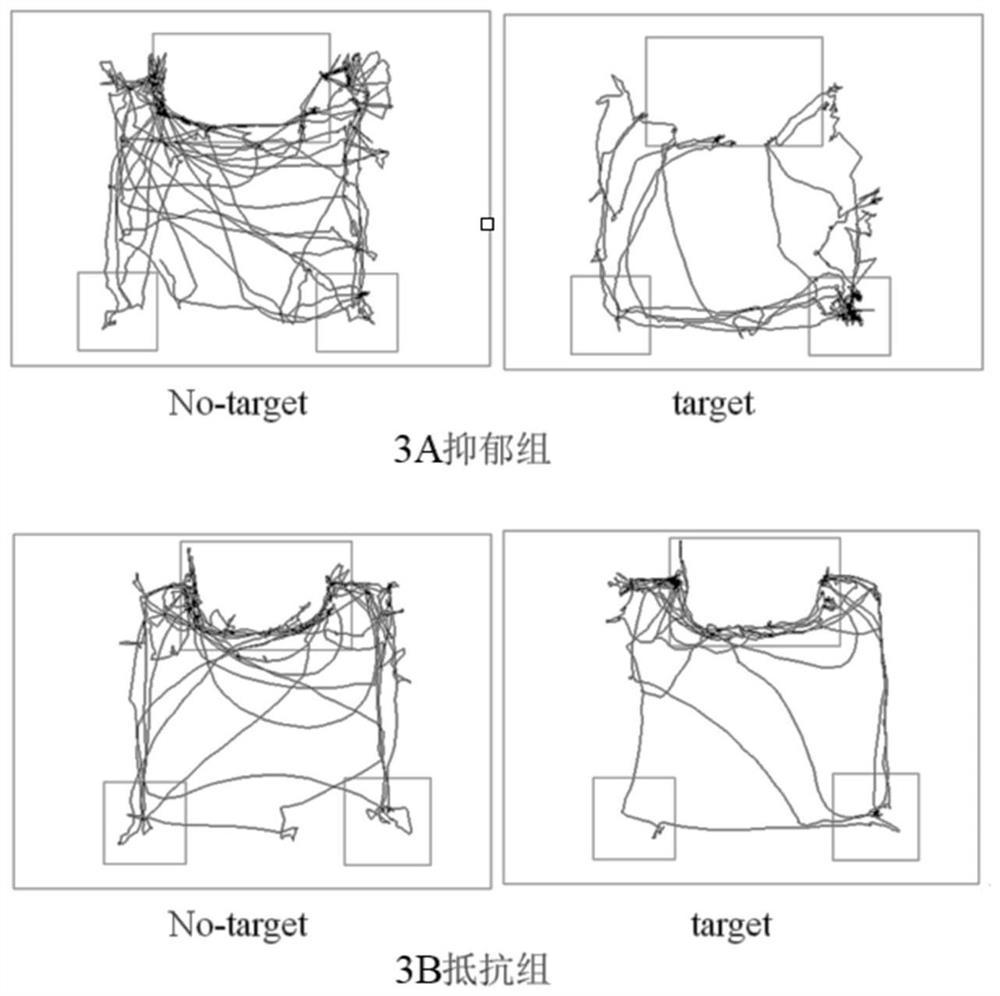Thymosin beta4 medicinal preparation for treating depression as well as preparation method and application of thymosin beta4 medicinal preparation
A technology of pharmaceutical preparations and thymosin, which is applied in the field of new uses of peptide substances, can solve the problems of long treatment time and side effects of antidepressants
- Summary
- Abstract
- Description
- Claims
- Application Information
AI Technical Summary
Problems solved by technology
Method used
Image
Examples
Embodiment 1
[0033] Embodiment 1—obtain depressed mice by chronic social frustration stress experiment;
[0034] In this example, mice with depression-like behavior were obtained by establishing a chronic social frustration stress model (CSDS). This model can simulate the depression caused by frustration in human social life, and the modeling has the advantages of strong repeatability and easy operation. . The specific model building process is as follows:
[0035] 1. The 6-week-old C57BL / 6J mice were randomly divided into experimental group and control group. For the mice in the test group, the CSDS stage lasted for 10 days and was performed at the same time period every day, such as 9:00-11:00 in the morning. C57BL / 6J mice in the test group were placed as intruders in the cage of 5-month-old male CD-1 mice, and they were physically challenged for 10 minutes to ensure the duration and effectiveness of the attack.
[0036] 2. After the frustration treatment, separate the C57BL / 6J and CD...
Embodiment 2
[0040] Embodiment 2—screening of depressed mice;
[0041] C57BL / 6J mice exposed to social defeat stress for a long time will develop a depression-like phenotype of social avoidance, which is manifested in the same period of time when socially frustrated C57BL / 6J mice are exposed to strange mice. Compared with normal C57BL / 6J mice, it will be significantly shortened. The social interaction test (social interaction test, SIT) can be used to evaluate the social avoidance behavior of mice. The test is mainly divided into the absence of strange CD1 mice (called the NoTarget stage) and the presence of strange CD1 mice. (referred to as the Target stage), and according to the ratio of the duration of entering the social contact area in the two test stages, the C57BL / 6J mice can be divided into CSDS-susceptible mice (susceptible) and CSDS-resistant mice (resilient).
[0042] 1. The social interaction test was carried out after 24 hours of CSDS treatment described in Example 1 above. ...
Embodiment 3
[0051] Embodiment 3—instill thymosin β4 through nose;
[0052] Dissolve Tβ4 in PBS to a concentration of 30, 60, and 120 μg / μL respectively. Tβ4 needs to be prepared immediately before use, and administered nasally with a 10 μL pipette.
[0053] For the selected depressed mice, they were divided into: CSDS+PBS group (instill 10 μL PBS, 5 μL in each nostril), CSDS+12 mg / kg Tβ4 group (instill 10 μL with a concentration of 30 μg / μLTβ4, 5 μL in each nostril); CSDS+ The 24mg / kg Tβ4 group was instilled with 10 μL of 60 μg / μL Tβ4, 5 μL in each nostril; the CSDS+48 mg / kg Tβ4 group was instilled with 10 μL of 120 μg / μL Tβ4, 5 μL in each nostril.
PUM
 Login to View More
Login to View More Abstract
Description
Claims
Application Information
 Login to View More
Login to View More - R&D
- Intellectual Property
- Life Sciences
- Materials
- Tech Scout
- Unparalleled Data Quality
- Higher Quality Content
- 60% Fewer Hallucinations
Browse by: Latest US Patents, China's latest patents, Technical Efficacy Thesaurus, Application Domain, Technology Topic, Popular Technical Reports.
© 2025 PatSnap. All rights reserved.Legal|Privacy policy|Modern Slavery Act Transparency Statement|Sitemap|About US| Contact US: help@patsnap.com



